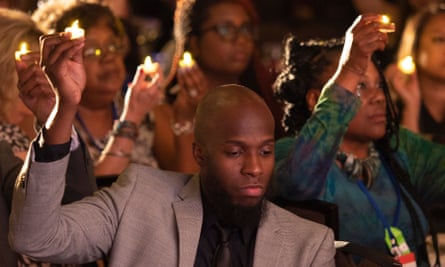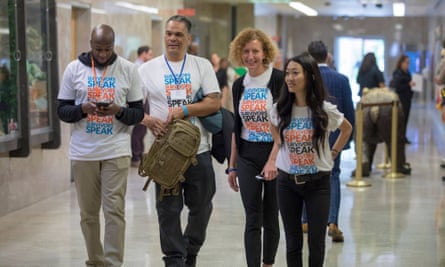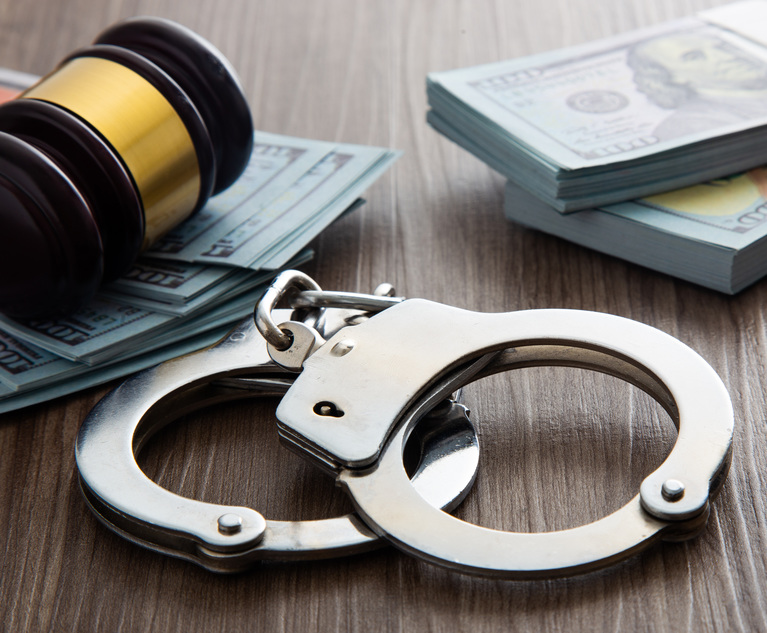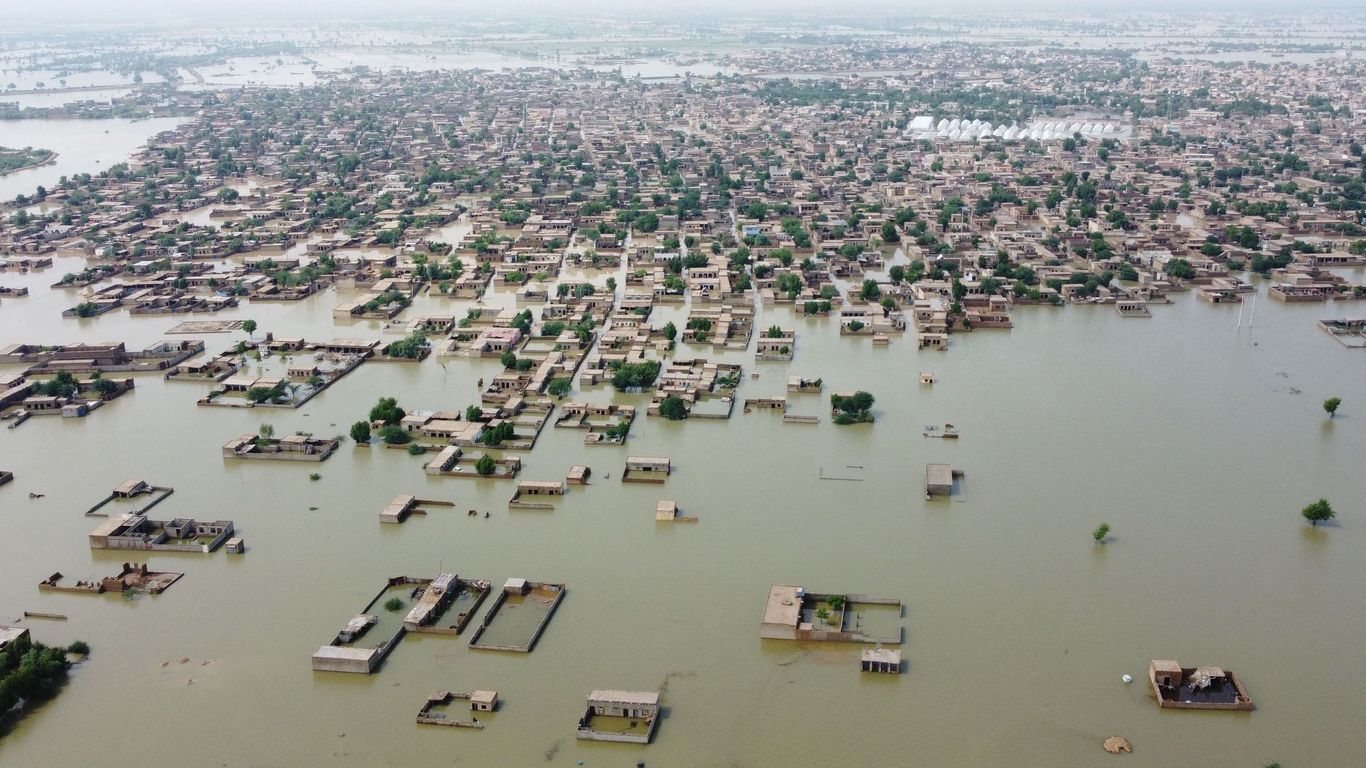For decades, the cause of victims’ rights has been one of the most powerful political movements in the US.
From the 1980s to 2010s, advocates worked with law enforcement to transform the criminal justice system, passing more than 32,000 laws explicitly in the name of victims. Fueled by backlash to the civil rights era, white Americans’ fears of rising crime and hysteria around particularly shocking cases of violence, the policies exponentially grew prison populations. They also created mandatory long and indefinite sentences; locked up youth for life; expanded surveillance; and restricted the rights of defendants and incarcerated people.
In her new book, In Their Names, criminal justice advocate Lenore Anderson argues the traditional victims’ rights movement caused immense harm through mass incarceration and harsh punishments – while fundamentally failing to address survivors’ needs or support public safety.
Anderson argues the legal system doesn’t serve most victims – with the majority of violent incidents never reported to police and a fraction of cases solved – and that laws passed for victims have directly hurt those they claim to help. Mandatory arrest laws for domestic violence, for example, have not reduced those crimes and instead resulted in victims themselves, particularly women of color, facing arrest. “Tough on gangs” laws put victims into databases, leading to their surveillance. The “war on drugs” made many Black crime victims more likely to be arrested than helped or protected.

While victims’ advocates established compensation programs for survivors, less than 10{e421c4d081ed1e1efd2d9b9e397159b409f6f1af1639f2363bfecd2822ec732a} of victims receive help, with people of color frequently denied aid because there was no police report, they had prior criminal records, or authorities claimed they “contributed to their own victimization”. Many people in prison are victims who never got help.
Anderson, the Oakland-based president of Alliance for Safety and Justice, which supports survivors, lays out a new vision for victims’ rights, one that focuses not on punishment, but on providing aid and trauma recovery, with the goal of meeting people’s material needs and interrupting cycles of violence. She’s part of a growing movement of survivors and activists who have spoken out in favor of services and prevention, instead of vengeance and incarceration.
This conversation has been edited and condensed for clarity.
As a lawyer and activist, how did you first start to understand the impact of the victims’ movement?
California is where the law-and-order victims’ rights agenda was born and where it remained the strongest for decades. I remember how the campaign to enact “three strikes and you’re out” in 1994, which established life sentences for third felonies, was embedded in the idea of victims’ rights. As a young attorney in the early 2000s, I’d bring groups of parents of incarcerated youth to the state capitol to talk with legislators about horrible conditions inside youth prisons and the devastating impacts on families. And we’d get blank stares or they’d say: “You’re being anti-victim.” The idea that we’d want to reduce incarceration and treat people inside the system with any level of dignity and humanity meant we were “anti-safety” or we wanted to hurt a victim. Across the country, there was a powerful undertone that all this criminal justice bureaucratic spending was in the interest of victims – and that idea stopped a lot of attempts at reform.
You documented how some officials explicitly argued that the best way to honor victims was to make prisons as horrible as possible, like “walking through fires of hell” as one governor said. How did we get to that point?
In the 60s and 70s, there was a conservative political agenda formulated around the concept of “law and order”. The US supreme court had established more rights for people accused of crime and conservatives said: “The courts have given away the constitution to people facing conviction and they have all the rights now.” There was an attempt to scare voters living in a moment of significant social change. But they hit on a truth: that victims were being ignored by the criminal justice system. And homicides were increasing.

There were also sectors of the feminist movement calling for a recognition of how survivors of sexual assault and domestic violence had been disregarded. And the savviest politicians were able to wrap those things together and promise to help the “overlooked victims” – by beefing up the criminal justice system. There was a serious crisis politicians needed to address. But the mistake, even from people who were genuinely concerned, was to say the solution was to make the justice system bigger and more powerful. It ended up being very harmful.
Who is served by this victims’ rights agenda? You noted that 80{e421c4d081ed1e1efd2d9b9e397159b409f6f1af1639f2363bfecd2822ec732a} of laws named after specific victims were honoring white people.
There is a “hierarchy of harm” in terms of who is recognized as “innocent” and who is not, and who the justice system seeks to help and who it disregards. The people who are conceived of as “innocent” by reporters and politicians are often middle-class or elite, white Americans. In the 80s and 90s, the stories that drove news cycles and drove politicians to clamor for tougher laws almost always involved a white victim, and in particular a white woman or child. What’s jarring about how we culturally represent victims is how inaccurate it is, in terms of who faces the most common vulnerabilities. There are times when politicians would actually leave no stone unturned to figure out ways to protect and defend who they conceive of as innocent. For example, after the horrific, unimaginable murder of seven-year-old Megan Kanka in 1994, within a matter of days the New Jersey legislature convened and broke its own procedural rules to quickly pass Megan’s law. There are millions of other victims who never get politicians clamoring to enact a law in their name.
How were everyday victims affected by these priorities?
In the name of protecting victims, there was a push toward mass surveillance and giving law enforcement agencies war-like powers and dispersing them primarily into communities of color. We passed all these gang and drug laws that empowered agencies with the authority to stop and arrest everyday people for all kinds of things. For example, at the height of Cleveland’s “war on drugs” in the early 2000s, which almost exclusively targeted Black Clevelanders, there were rape kits piling up that were not being tested. Actual harm was not taken seriously and victims were disregarded. In these communities overrun by police, they would mostly get arrested for drugs.
You expose the falsehood that “victims” and “people who commit crimes” are separate groups. What do we know about who is victimized?
The vulnerabilities that lead someone to potentially get hurt by crime are the same vulnerabilities that lead someone to potentially commit a crime. The reality is, when we don’t protect people, often they are either going to get hurt or hurt. While people of all walks of life are hurt by crime and violence, when you look at chronic exposure to everyday violence – robberies, break-ins, gun or interpersonal violence, witnessing violence – the people who are frequently vulnerable are low-income folks, people of color, immigrants, individuals disabilities and those who are unhoused. Those are all societal barriers to being protected from harm. And if you were harmed, especially at a young age, and you don’t get help recovering, that affects every aspect of your life. That systemic disregard for people when they are hurt leads to the likelihood that they may later commit a crime. Roughly 90{e421c4d081ed1e1efd2d9b9e397159b409f6f1af1639f2363bfecd2822ec732a} to 95{e421c4d081ed1e1efd2d9b9e397159b409f6f1af1639f2363bfecd2822ec732a} of people who get arrested and convicted of a crime were a victim before. So why are we spending all this money on toxic prisons? If we really cared about safety, we’d have a massive campaign to address unaddressed trauma.

I feel like that statistic is so critical. How could we tackle that unaddressed trauma?
In the book, I propose a right to trauma recovery. There’s a victims’ rights constitution in almost every state, with most creating a right to compensation or a limit on the rights of people in the justice system. Like, if you get more rights, this other person gets fewer rights. I want to abandon that idea. What if instead, we say the most important thing we can do is help victims on a path to recovery. If we actually want to stop the cycle of violence, then we start with people who were hurt and offer a genuine, attainable pathway to recovery. Not only is that the moral thing to do, it also reduces the likelihood that those very survivors or their loved ones fall into crime. If alleviating unaddressed trauma was at the center of our public safety strategies, we would go so much further to stop the cycle of harm than mass incarceration ever could.
What do survivors actually need and want?
It’s shocking in its basic-ness. My organization surveys survivors regularly and the calls that come in to us are so consistent: my loved one was shot and is about to be discharged from the hospital; they don’t want to be released into the same neighborhood; they’re now in a wheelchair and need an accessible home; they’re no longer able to do their job; they’re suffering extreme panic attacks; they can’t make ends meet any more. One would think if you were hurt by violence, the government would do everything possible to give you a lifeline. People need “crisis assistance”. That means repairing bullet holes, cleaning up bloodstains, making sure children who witnessed violence get support immediately. It means accommodations for school, housing and work and adequate time off to heal. You have to give people the opportunity to find a new life in the aftermath of such horrific loss. As a general matter, our safety systems do very little of that, but that is where safety starts.



